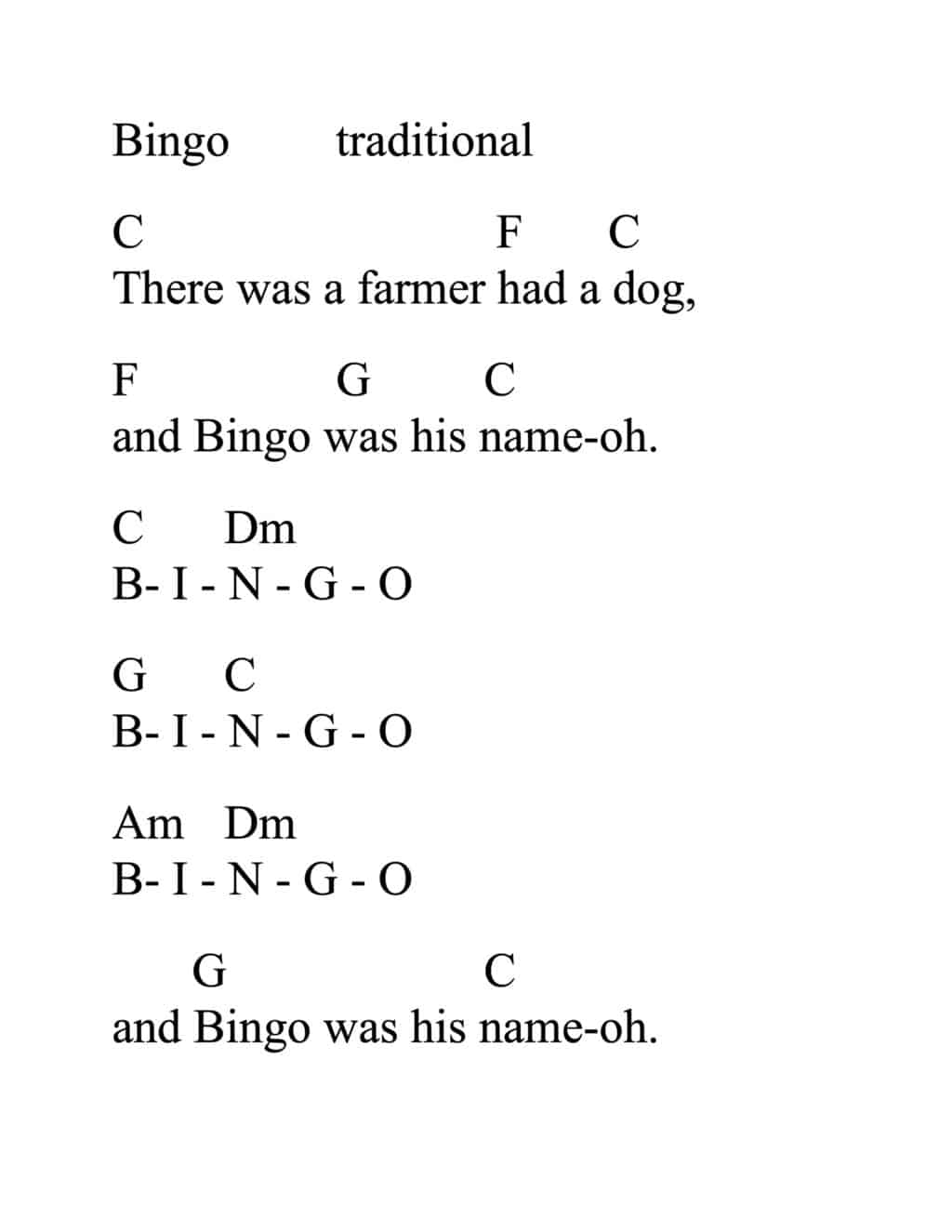BINGO, traditional
Self-regulation, body awareness, literacy, math
I hope I’ve given you a glimpse of how wide open this song can be! Here are some ideas, most of which I’ve tried:
I got the phrase “experiment with time” from DanceAbility. Check out their website, it’s amazing. Experimenting with time connects easily with self-regulation (taking a big breath when “measuring” a long sound) and body awareness. Speaking of breathing, Barefoot Books sells a box of yoga poses on cards called Yoga Pretzels, and in one, called “Bunny Breath,” you inhale three short sniffs through your nose, followed by a long exhale. After trying Bunny Breath, children name an animal and show its breath pattern: “What animal’s breath are you making? Lion breath! Show me the pattern… Now we’ll all do lion breath.” They might come up with a notation for representing that pattern is it can be “read” and remembered later on, and that can be used for classroom documentation and assessment.
Experimenting with time connects with slow motion. A group of grade school kids I was teacher began spontaneously falling to the floor in slow motion, saying: “Nnnnnooooooo,” like they were in some action movie and had fallen off a cliff or something. It was hilarious, and I showed it to other children. What a great way to work on balance and self-regulation! It’s actually very hard to do, try it.
“Zip Zip Bam,” on another video here, begins with the same rhythm as BINGO.
Imitate vocal/clapping/tapping/moving rhythms that children make up. Any repeated movement a child does provides an opportunity for you to imitate it, validating that child, especially one who is reticent to participate; other children will catch on and imitate you, and the child who started it will feel valued. This can be totally non-verbal: they don’t have to say a thing, and you don’t either, you just smile at them and do what they’re doing (in some cases not even looking at them so they don’t feel on the spot). Even better, children also naturally imitate each other. Once, when I commented on how two children were doing the same movement, another child talked about being a copycat (in a negative way). This was a perfect introduction into a meaningful discussion about “Is copying someone a good thing or a bad thing? How do you feel when someone copies you? Are there times when it’s good to copy, and are there times when it’s bad?”
I haven’t tried this with BINGO in particular, but you could split up the class and have one side sing “B, I,” and the other sing “NGO,” and do the same with the clapping pattern.
Or rearrange the letters and sing: ‘There was a farmer had a frog and BOING was his name-O. They can also be rearranged to NO BIG.
Rearrange the letters to spell IN BOG, then explain what a bog is and sing Rattlin’ Bog.
Replace the B with other letters: LINGO, RINGO, ZINGO, etc. (I do more of this letter replacement in Boom Chicka Boom – see my video of this)


